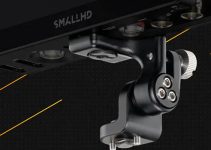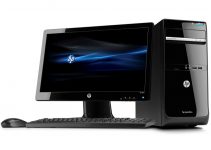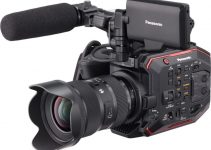Until Apple unlocks the iPad ecosystem, a Mac is going to be the choice for professional apps and work. For the moment one of the best and most affordable options is the M1 Mac mini. Great for desk use. However, without a real display it’s a bit tough to take on the road and it doesn’t work natively with just an iPad as the monitor. If you want a more mobile setup and already have an iPad, the Luna Display might be the perfect accessory.
Tech vlogger Lamar MK has this tutorial on how to create a more portable setup with an M1 Mac mini by using the Luna Display to use an iPad as your main display. This little device even works with older devices and can help you get an iPad set as a second screen if that’s more your style.
Impressive to me is the size. It’s a tiny dongle that you pop into a USB port on the Mac. It has three different modes:
- Mac to iPad
- Mac to Mac
- Headless
It’s straightforward by those names. It lets you either use an iPad as a display or even another Mac as a display for a Mac. Headless is unique for Mac mini as it means you can set the Luna Display and an iPad as the main display for the computer. Usually, for SideCar (Apple’s similar solution), you need a main display to even get it started. This eliminates that hassle and gives the boost to portability.
An example where headless mode would come in handy is for event coverage or longer travel. You certainly aren’t going to pack away a massive tower desktop and your iPad isn’t going to cut it for real work. So, you pack the Mac mini along with your iPad, and during the day you are out shooting and have the iPad for everyday tasks and then when you get back to your home base you can load up the Mac mini and do the heavy lifting.
Set Up Tips
To get the Luna Display initialized you’ll want a display connected your Mac mini via HDMI. Then you pop in the dongle to a USB-C port.
Once you have that done you head to the website and download the Luna primary app to the Mac mini. Install it as usual. You’ll need to unlock some basic security settings to give it access to the screen and be able to transmit it. It should walk you through these options, but if you have issues you’ll want to double check it.
With that done you can head to the iPad and download the Luna Display app. Once here you can connect to devices on the locate network (or via USB). Allow it on the Mac and then it should just pop on. It should work just like a regular display. It is smooth and latency is very low. You can also change the arrangement to better fit your settings.
Headless Mode
You’ll have to turn off FileVault to get Headless Mode to function. It’s based on how you need to connect a display to get the Mac to boot properly. Then in system preferences, you’ll want to pick your user and turn on automatic login for your account.
Now, even without a true monitor you can operate your Mac mini. The cool thing is that since this is connected via a wireless connection you can actually move around within your network and still work on your computer. He gives an example by heading to his backyard and it still works.
This is a cool little device and even for simply using the iPad as a secondary display it seems well worth it.
I might just have to pick one up.
[source: Lamar MK – Tech Videos and More]
Order Links:
Disclaimer: As an Amazon Associate partner and participant in B&H and Adorama Affiliate programmes, we earn a small comission from each purchase made through the affiliate links listed above at no additional cost to you.




